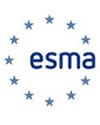Industry bodies have raised concerns over the impact of European plans to migrate interest rate swaps (IRS) to central clearing.
Responding to a consultation by the European Securities and Markets Authority (ESMA), buy- and sell-side trade associations have questioned whether the proposed ‘bottom-up, top-down’ approach to identifying instruments appropriate for central clearing approach will ensure a smooth transition of IRS, which are currently traded bilaterally and over the counter.
As outlined in the European market infrastructure regulation (EMIR), the top down approach involves ESMA identifying classes suitable for central clearing, but for which no central counterparty (CCP) has received authorisation, while the bottom up approach involves mandatory clearing of classes already cleared by authorised CCPs. The first CCPs to be authorised by ESMA under EMIR were approved in Q1 2014.
ESMA has identified four types of IRS – basis swaps, fixed-to-float interest rate swaps, forward rate agreements and overnight index swaps on a range of currencies and maturities – as being suitable for phased migration to the central clearing obligation.
The Investment Management Association (IMA), which represents UK-based investment intermediaries, has urged ESMA to consider additional assessments of the ability of authorised CCPs during the migration of IRS classes to central clearing.
The IMA said draft rules should make it clear that phase-in periods are based on ESMA’s assessment of CCPs’ ability to support expected volumes at the relevant phase-in date, and called on ESMA to reassess timeframes for migration if they have doubts about CCP capabilities. “ESMA should include an ability to undertake a further assessment of the actual position of CCPs at the end of each phase-in period to ensure that the timeframe for applying the clearing obligation to each category of counterparty remains appropriate,” its submission read.
A joint submission by the International Swaps and Derivatives Association (ISDA) and FIA Europe, the European arm of the Futures Industry Association, recommended that the final rules – contained in a regulatory technical standard (RTS) – should specify that the clearing obligation will only apply to OTC derivatives classes if they meet the seven characteristics listed in the annex of the draft RTS and can be cleared by two authorised CCPs.
“To ensure that market participants are able to assess whether a particular contract is subject to the clearing obligation, greater transparency is needed as to what contracts can actually be cleared by authorised and recognised CCPs,” the two associations wrote.
ISDA and FIA Europe also called for “a more effective mechanism” for terminating the clearing obligation in exceptional circumstances, proposing that EMSA seek an amendment to EMIR in its 2015 process to enable the watchdog to move quickly to terminate or suspend central clearing “if necessitated by market events”.
In addition, the IMA highlighted that draft ESMA rules proposed that overnight index swaps up to three years in maturity should be centrally cleared, while the US Dodd-Frank Act requires only instruments of two-year maturity and below to be cleared mandatorily. It called on ESMA to fall in line with US rules to ease “international convergence”.
Finalising the mandate
The ESMA consultation process finalises detailed technical rules under the EMIR, Europe’s legislative response to the requirement of G-20 leaders for greater transparency and reduced systemic risk in the OTC derivatives market in the aftermath of the financial crisis.
ESMA issued consultation documents on its proposed RTSs for central clearing of IRS and credit default swaps (CDS) in July. The IRS consultation closed for submissions on 18 August and submissions were released yesterday.
The deadline for submissions on the proposed CDS rules will close on 18 September and the European financial markets watchdog is scheduled to issue RTSs by the end of 2014, after which the European Commission has three months to sign off on the new rules before they become binding.
In the US, OTC derivatives instruments were migrated to mandatory central clearing via a regulatory mechanism known as ‘made available to trade’ (MAT).
Central clearing of US swaps was introduced in stages during 2013, as part of the Commodity Futures Trading Commission’s implementation of the Dodd-Frank Act, but it only became compulsory once a MAT application for a particular set of instruments from a swap execution facility (SEF) was approved by the derivatives regulator.
Some US market participants have expressed concern at the ability of SEFs to apply to trade and clear less-liquid instruments, and the absence of a mechanism to reverse the MAT application should volumes remain low.
Front-loading exemption
A number of trade groups also voiced their concern over ESMA’s planned schedule for requiring existing transactions to be entered for central clearing once any mandate goes live. Currently, ESMA plans to give buy-side firms a phase-in period of 18 months from the start of mandatory clearing before they are required to comply. Under current proposals, swaps entered into during the phase-in period must be cleared centrally once the obligation comes into force.
The IMA proposed removing the front-loading obligation for category 2 counterparties – financial counterparts that are not direct clearing members – and reducing the phase-in period for new trades to be cleared, from 18 months to 12 months.
“This will result in new OTC contracts entering the cleared environment earlier than originally planned, and will reduce the front-loading burden on firms and the pricing uncertainty created in the market,” it wrote.
The joint ISDA-FIA response also called for category 2 counterparties to be exempt from the frontloading requirement during the phase-in process.
